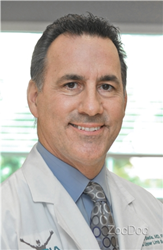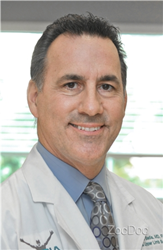[ad_1]

Dr. Alejandro Badia
Use hospital emergency only for an open fracture — when the broken bone actually breaks through the skin — or cause extensive bleeding, an open wound, or trauma to the head, face, neck or spine or with severe injuries such as a fracture of the femur or a hip fracture in the elderly.
MIAMI (PRWEB)
May 19, 2021
The trend of taking specialty health care, including orthopedics, out of the hospital and offering it to patients much more quickly, efficiently, conveniently, less expensively and with better outcomes in standalone centers is growing, “and that’s a good thing,” says Miami-based orthopedic surgeon Alejandro Badia MD, who admits he is a “disruptor” of tradition. Indeed, Dr. Badia’s concerns for the “overly-prominent” role of costly hospital systems in orthopedic treatment, and his hope for dramatically improving the “patient experience” are what prompted him to become an early innovator by establishing a unique business model — OrthoNOW®.
OrthoNOW® is a network of full-service, state-of-the-art, walk-in centers where patients can receive examination, imaging, diagnosis, and orthopedic care in just over an hour without need for appointments or referrals. The Centers’ teams also provide follow-up procedures and, if necessary, coordination with outpatient surgery and rehabilitation. Dr. Badia refers to his concept as “orthopedics on demand.”
Indeed, the network even offers patients an award-winning mobile app – OrthoNOW Mobile App v3.0 – compatible with Android and iPhones. The app gives patients convenient and ready access to OrthoNOW® clinicians.” This new model of health delivery that uses smart technology platforms, including virtual care through integrated telehealth applications and a patient mobile app, which, among its services, connects with Uber ridesharing to provide patients with ready transportation to and from our centers,” Dr. Badia says. The first OrthoNOW® clinic opened in Florida, and there are plans to continue expanding to major markets throughout the country.
“OrthoNOW® and specialty care centers like it are disruptive because they are forcing traditional health systems to re-examine their structure and respond to rising consumer demand for more transparency, convenience, and affordability,” says Dr. Badia, an expert in treating disorders of the hand, wrist, shoulder, and other upper extremities. He recently authored the book Healthcare from the Trenches, detailing system barriers that have led to “skyrocketing health costs, lack of patient access and inefficient delivery of care.”
Statistics indicate approximately 3.9 million new orthopedic or musculoskeletal-related injuries occur annually in the United States at a hit to the American economy of hundreds of billions of dollars.
“Basically, I tired of the typical scenario, in which a patient goes to the hospital emergency department, waits hours for an initial evaluation by a physician who does not have expertise in musculoskeletal problems, perhaps undergoes unnecessary diagnostic imaging, and finally is told to put an ice pack on the injured area, take anti-inflammatory medications, and follow up anyway later with an orthopedic specialist,” Dr. Badia indicates. “Then, to add insult to the patient’s injury, he or she gets hit with a hospital bill for hundreds – even thousands – of dollars for services that may or may not have even diagnosed – or treated — the patient’s problem accurately or appropriately.”
Dr. Badia admits that general urgent care centers can provide the injured patient quicker access to a health provider at less cost than a hospital emergency room, but he says these facilities do not normally offer access to a trained orthopedic specialist. Meanwhile, a wait to find the right specialist via appointment can take weeks.
He says his work to develop OrthoNOW® was a response to “a health care market that forces patients with orthopedic or musculoskeletal injuries to make a trade-off between either receiving prompt care or going to a specialist for quality care. We wanted to give the patient both: immediate and easy accessibility and leading quality.”
And “leading quality” means improved outcomes. Researchers agree.
A study in the Journal of the American Medical Association determined that the 30-day surgical site infection rate in low-risk adult patients who had their procedures performed in an ambulatory surgery center was nearly half that for a similar group of patients who had undergone their operations in a hospital setting. And a report published in the Journal of Bone & Joint Surgery indicates patients who underwent ankle fracture repair in an outpatient setting versus within the hospital had a reduced risk of developing medical problems like urinary tract infection and pneumonia within a 30-day period following surgery.
Even more telling is a study, presented at the 2016 annual meeting of the Society of Military Orthopaedic Surgeons, in which investigators concluded that a “significant number” of adult orthopedic conditions seen at some Level I trauma centers are “misdiagnosed and ineffectively managed.” Nearly 40 percent of the 239 emergency ortho consultations reviewed were considered inaccurate because they were too general, incomplete, contained wrong terminology, or, in more than 11 percent of cases, deemed “grossly inaccurate,” investigators said.
The same issues are true for children with orthopedic injuries. At an American Academy of Pediatrics National Conference & Exhibition, University of Maryland researchers showed that more than 90 percent of “potential pediatric fractures” are incorrectly splinted by hospital emergency staff and by general physicians in non-orthopedic offices and settings. Improper splinting can lead to additional patient injury, including skin complications, excessive swelling, and failure to adequately immobilize the fractured bone, the scientists reported.
Other experts state that procedures performed in an ambulatory surgery center also tend to be quicker, with faster patient-recovery times. Meanwhile, research by two economists found that patients spend about 25 percent less time in an ambulatory surgery center than dopatients in a hospital outpatient setting for the same procedure.
Of course, patients themselves can play a major role in health reform by not seeking treatment in high-cost settings for non-life-threatening problems, adds Dr. Badia. For those who incur relatively minor orthopedic injuries due to falls, do-it-yourself and occupational projects, or sports activities, he offers these tips:
- Do not use pain as the underlying measure for determining whether or not to head to the hospital following injury. Pain alone is not an emergency.
- Manage the discomfort and swelling of an injured joint or limb by immediately applying ice to it, elevating it, and resting it.
- Take an over-the-counter anti-inflammatory medication to control pain. That is likely what an emergency room doctor will recommend anyway.
- Contact an orthopedic specialist or go to an urgent care center specializing in orthopedics should swelling and pain persist after 24 or 48 hours.
“Just remember, use hospital emergency only should an injury result in an open fracture — when the broken bone actually breaks through the skin — or cause extensive bleeding, an open wound, or trauma to the head, face, neck or spine or with severe injuries such as a fracture of the femur or a hip fracture in the elderly,” Dr. Badia advises.
Alejandro Badia, MD, FACS, internationally renowned hand and upper-limb surgeon and founder of Badia Hand to Shoulder Center and OrthoNOW®, a walk-in orthopedic care clinic. He is a member of the American Society for Surgery of the Hand, American Association for Hand Surgery and the American Academy of Orthopedic Surgeons and an honorary member of many international professional hand societies. Dr. Badia specializes in treating all problems related to the hand and upper extremities, including trauma, sports injury, joint reconstruction, nerve injuries and arthroscopic surgeries. Go to OrthoNOWcare.com and drbadia.com.
[ad_2]

